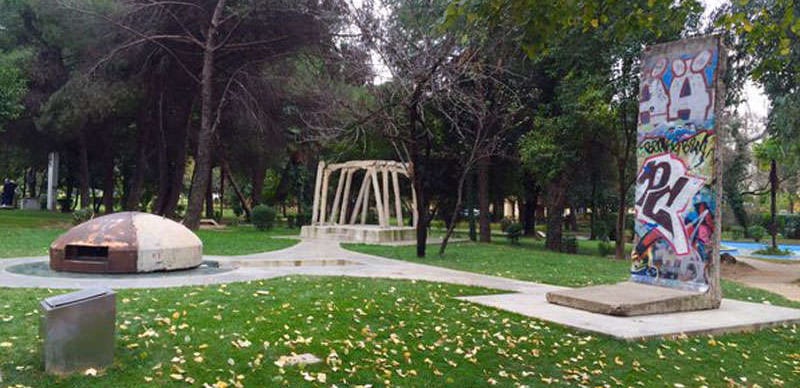Postbllok: Albania’s Checkpoint of Memory
Once a symbol of fear, now a space for reflection—Postbllok invites you to step inside the shadows of Albania’s communist past.


In the center of modern Tirana, surrounded by cafés, boutiques, and the hum of everyday life, stands a strange and haunting installation: Postbllok, or the Checkpoint Monument. At first glance, it may seem like just a few scattered objects—some concrete, a tunnel, a slab of iron—but each piece carries the weight of a history many are only beginning to understand.
For decades, Albania was one of the most isolated countries in the world. Under the dictatorship of Enver Hoxha, who ruled from 1944 until his death in 1985, the country turned inward, cutting ties with allies, banning religion, and criminalizing even the faintest whisper of dissent. It became a state of fear—where neighbors could become informants, where listening to foreign radio was a crime, and where attempting to leave the country could mean death.
Postbllok, unveiled in 2013, is not a traditional monument. It does not glorify a leader or mark a military victory. Instead, it confronts. It remembers. It invites you to stand in the shoes of those who lived under surveillance, control, and silence. And, perhaps most importantly, it asks you not to forget.
A Monument to a Silenced Era
The name Postbllok literally means “Checkpoint” or “Checkpoint Block,” and it's situated near the entrance to what was once the Blloku, the most elite and restricted neighborhood in communist Albania. During Hoxha’s rule, ordinary citizens were forbidden to enter this zone, which housed the regime’s top officials and their families. High walls, armed guards, and secrecy surrounded this area, while outside those barriers, most Albanians struggled with poverty, isolation, and oppression.
Today, Blloku is a trendy district filled with bars and fashion boutiques—but Postbllok stands as a rupture in that cheerful façade, a reminder of what came before.
The monument consists of three main elements, each chosen for its deep symbolic and historical value.
The Bunker
The most immediately visible is the cold, round concrete bunker, partially embedded in the ground. During Hoxha’s paranoid reign, over 173,000 bunkers were built across the country—on beaches, mountains, and city streets—designed to protect Albania from imagined invasions that never came. These mushroom-shaped structures became a symbol of the regime’s obsession with surveillance, militarization, and control. Families were often ordered to train in case of war, and the bunker was held up as a sacred object of national defense.
But in reality, they protected no one. They simply spread fear.
The bunker at Postbllok was relocated from near the city of Shkodër and placed here to be encountered—not avoided. You can step inside it. Stand in the claustrophobic silence. Imagine what it would feel like to live under constant threat, in a world where even your thoughts had to be guarded.
The Concrete Columns from Spaç
Behind the bunker stand three upright concrete columns, torn from the ruins of the Spaç labor camp, one of the most notorious prison camps of communist Albania. Spaç was a place where political prisoners—many of them writers, intellectuals, and ordinary citizens accused of “thought crimes”—were forced to mine copper in brutal conditions. Torture, starvation, and arbitrary execution were not rare. Speaking out against the regime or even telling a joke that criticized the Party could earn someone years of hard labor.
The columns were once part of the prison structure, and their jagged surfaces speak of decay—but also survival. They are scarred reminders of human suffering, but they also honor the courage of those who resisted.
To stand before them is to confront the cost of silence—and the price of speech.
The Berlin Wall Fragment
Perhaps the most surprising part of the monument is a fragment of the Berlin Wall, gifted to Albania by Germany. This chunk of graffiti-covered concrete serves as a reminder that Albania’s dictatorship, though uniquely harsh and closed off, was part of a broader story: the Cold War, the Iron Curtain, and the division of Europe.
The Berlin Wall was torn down in 1989. Albania’s communist regime collapsed in 1991. But the scars—both visible and invisible—would linger for much longer.
This piece of wall connects Albania’s experience to those of East Germany, Poland, Czechoslovakia, and other Eastern Bloc countries that endured and eventually broke free from totalitarian rule.
It stands not just as a memory, but as a warning.
Created by Survivors, For the Future
Postbllok is the result of a collaboration between artists and survivors of the regime. Most notably, Fatos Lubonja, a writer and former political prisoner who spent 17 years in communist jails, helped conceive the monument. His personal testimony and relentless advocacy for public memory played a major role in shaping how Albania now engages with its past.
In many post-dictatorship societies, there is a temptation to move on too quickly—to erase, to forget, to redecorate the past. Postbllok resists that urge. It insists on remembering, not for the sake of bitterness, but for the sake of truth.
By placing it in the heart of Tirana’s most modern, vibrant neighborhood, the monument quietly asks passersby to pause. To remember what this place once was. To reflect on the fragility of freedom.
Why It Matters
Postbllok is not a large or flashy memorial. There are no grand fountains, no sculptures in marble. But its power lies in its honesty. It does not sanitize the past. It doesn’t try to “balance” narratives. It says: this happened. These are the remnants. Look at them.
And perhaps that’s why it resonates so deeply.
For many Albanians, especially the younger generations born after 1991, the communist period can feel abstract or distant. Textbooks offer limited explanations. Political discourse is often polarizing. Monuments like Postbllok are crucial because they provide physical, experiential contact with history. You can touch the bunker. Walk through the columns. Read the graffiti on the Berlin Wall.
In a time when disinformation, revisionism, and apathy threaten historical memory across the globe, Postbllok is a bold act of remembrance.
Visiting Postbllok
Whether you’re a tourist exploring Tirana for the first time, or a local revisiting the city with fresh eyes, Postbllok is worth your time. It doesn't demand much—there’s no ticket booth, no timed entry. But what it offers in return is perspective.
It’s a place where history is not sealed behind glass but open to the street. A place where the past confronts the present. A place that quietly tells you: this was real. This mattered.
Practical Information
Location:
Postbllok is located on Dëshmorët e Kombit Boulevard, right in front of the Prime Minister’s Office, and near the Rogner Hotel. It’s a central spot, easy to find whether you’re on foot or by car.
How to get there:
If you’re walking from Skanderbeg Square, head south along the main boulevard. You’ll find Postbllok on your left just before entering the Blloku district. Taxis are also affordable and plentiful in Tirana.
Opening hours:
There are no set hours—it’s an open-air monument, accessible 24/7.
For more information and historical background, visit: https://iskk.gov.al






